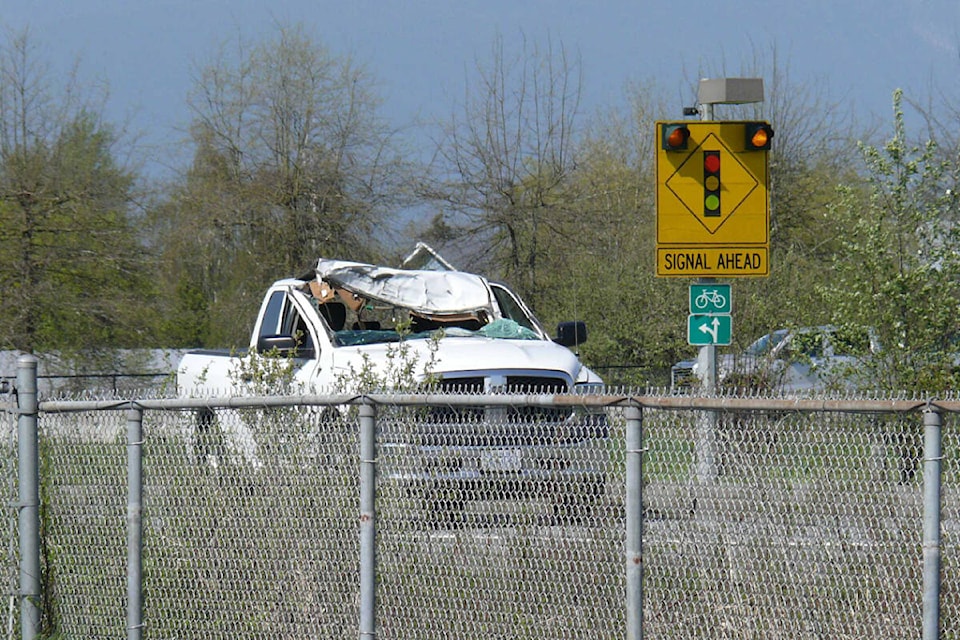A low approach when attempting to land was the only identified factor in a report on a dramatic plane crash at Langley Regional Airport last May.
The Transportation Safety Board of Canada (TSB) report on the May 2 crash of a small Cessna 182P, which clipped a truck on 216th Street before hitting the airport fence and bursting into flames found no issues with weather or the aircraft itself.
The report lays out the circumstances of the dramatic crash.
After a sightseeing flight, the plane, with a pilot and one passenger on board, was on approach westbound to land on Runway 25, which runs parallel to 56th Avenue and starts just west of the airport’s boundary near 216th Street.
Just after 3 p.m., “the aircraft was observed to be low on approach,” the report says.
It then slammed into the roof of a pickup that was passing on 216th Street, about 450 feet east of the start of the displaced threshold. The plane travelled a further 60 feet before hitting the airport’s fence, and slid 30 more feet before it came to rest against a berm.
The plane caught fire. The passenger got out on her own, and a passerby rescued the pilot. The pilot was seriously injured, while the passenger and the driver of the Township of Langley truck that had been struck received minor injuries.
The report noted that the plane appeared to have been lined up with the center of the runway.
READ MORE: Plane crashes at Langley Airport
Investigation showed “no indication that the pilot’s performance was affected by medical or physiological factors.”
An examination of the burned remains of the plane showed no mechanical defects and no indication of a system malfunction that could have played a role in the crash.
Weather was clear and was not an issue.
The runway the pilot was aiming for is 75 feet wide, 2,743 feet long, and has a “displaced threshold” of 343 feet.
A displaced threshold is a point where landings are supposed to begin, indicated by painted arrows and a 10-foot-wide “threshold bar” painted on the asphalt, as at Langley Regional Airport.
While the TSB report is not intended to find fault, it indicates that the low approach was consistent with a landing aimed at the physical end of the runway, not the displaced threshold mark.
If a pilot is aiming for the threshold, on a standard landing approach, they will cross 216th Street at about 40 feet high.
However, on the same approach slope, but aiming for the beginning of the runway, an aircraft would cross 216th Street at just 10 feet above the roadway.
The TSB report concludes with a “safety message.”
“Runway thresholds are often displaced to ensure that the approach slope is clear of obstacles,” the report concludes. “Therefore, it is important that pilots aim to touch down beyond the displaced threshold to help maintain obstacle clearance.”
